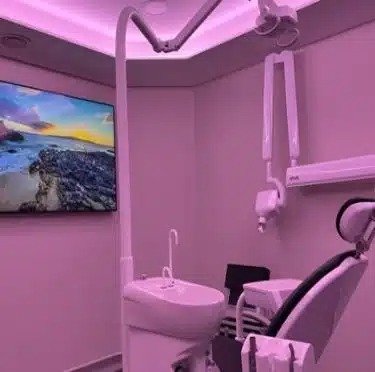Invisalign and Speech Changes: Will It Affect Your Talking?
Understand how Invisalign may affect speech and discover effective strategies to adapt quickly for a confident, clear smile.

Invisalign has become an increasingly popular alternative to traditional braces, offering a discreet and comfortable way to straighten teeth. While many individuals opt for Invisalign due to its aesthetic appeal and convenience, one common concern arises: Will Invisalign affect my speech? Since clear aligners are a foreign object in the mouth, they can initially impact how you speak, leading to minor speech disruptions. However, these issues are often temporary and manageable. This blog will explore how Invisalign influences speech, why these changes occur, and strategies to adapt quickly.
Understanding Invisalign
Invisalign is a clear aligner system designed to gradually shift teeth into proper alignment. Unlike traditional braces, which use metal brackets and wires, Invisalign consists of custom-made, removable plastic trays. These trays are worn for most of the day and replaced every few weeks as the treatment progresses.
Key Benefits of Invisalign
- Aesthetic Appeal – The aligners are virtually invisible, making them ideal for individuals conscious about their appearance.
- Comfort – It lacks sharp brackets or wires, reducing discomfort.
- Removability – Unlike fixed braces, It can be removed for eating and oral hygiene maintenance.
- Fewer Dental Visits – Patients typically require fewer visits compared to those with traditional braces.
- Predictability – Advanced digital technology ensures precise treatment planning and gradual adjustments.
- Improved Oral Hygiene – Since Invisalign is removable, maintaining proper oral hygiene is easier than with traditional braces.
Despite its many benefits, Invisalign users often experience temporary speech alterations, particularly during the first few days of wear.

How Invisalign Affects Speech
One of the most noticeable side effects of wearing Invisalign Wimbledon is slight speech disruption. The main reason behind this is the aligners' impact on the tongue’s movement and placement.
Common Speech Issues with Invisalign
- Lisping – The most frequently reported speech change is a slight lisp, particularly when pronouncing “s” and “z” sounds.
- Muffled Speech – Some users may feel like they are speaking with a slight obstruction, causing words to sound unclear.
- Changes in Pronunciation – Certain words may feel unnatural to say due to tongue interference with the aligners.
- Increased Salivation – Some users may notice an increase in saliva production, which can slightly affect speech patterns.
These effects occur because aligners introduce a thin layer of plastic between the teeth and tongue, slightly altering speech patterns. However, these issues typically diminish within a few days to a few weeks as the tongue adjusts to the new positioning.
Factors Influencing Speech Changes
Several factors determine how much it will affect speech:
- Individual Adaptability – Some people adjust faster than others, depending on their ability to adapt to changes in tongue placement.
- Severity of Dental Misalignment – Those with significant misalignment may notice a greater speech adjustment.
- Thickness and Fit of Aligners – Well-fitted aligners cause fewer disruptions compared to loose ones.
- Duration of Daily Wear – The more consistently you wear Invisalign, the faster your speech will adapt.
- Existing Speech Patterns – Individuals who already have minor speech difficulties may experience more noticeable changes.
- Alignment Phase – Speech adjustments may vary depending on which phase of treatment you are in, as some aligners fit more snugly than others.
Coping Strategies to Minimise Speech Disruptions
If you find that Invisalign is affecting your speech, there are several ways to speed up the adjustment process:
- Practice Speaking Regularly – Reading aloud, particularly texts with lots of “s” and “z” sounds, can help.
- Slow Down Your Speech – Speaking deliberately allows your tongue to gradually adjust to the aligners.
- Tongue Exercises – Practising tongue placement against the aligners can help improve pronunciation.
- Stay Hydrated – A dry mouth can exacerbate speech difficulties; drinking plenty of water helps.
- Wear Your Aligners Consistently – The more frequently you wear them, the quicker your mouth adjusts.
- Chew Sugar-Free Gum – This can help strengthen tongue muscles and improve speech adaptation.
- Use Speech Apps – Practicing with speech improvement apps can help you overcome minor pronunciation issues.
Speech Adaptation Timeline
Understanding the typical timeline for adjusting to it can help set realistic expectations. While the experience varies from person to person, a general adaptation pattern can be observed:
- First Few Days: Initial speech changes such as lisping and increased saliva production.
- First Week: The tongue starts adjusting, and speech clarity begins to improve.
- Two to Three Weeks: Most speech changes resolve, and talking feels more natural.
- One Month and Beyond: Speech is fully adapted, and any initial difficulties are no longer noticeable.
This gradual adaptation process is a normal part of the Invisalign journey and reinforces the importance of consistent wear.
When to Seek Professional Help
Most speech issues with it resolve on their own, but in rare cases, prolonged issues may require professional intervention.
Signs You Should Consult an Orthodontist:
- Speech problems persist for several months.
- Aligners feel excessively loose or uncomfortable.
- Severe difficulty in pronunciation affecting daily communication.
- Significant discomfort leading to avoidance of speaking situations.
- Increased difficulty with swallowing or excessive salivation.
If any of these symptoms persist, seeking an emergency dentist Wimbledon can help determine if adjustments to the aligners are needed.

Benefits of Invisalign Despite Speech Adjustments
Despite minor speech adjustments, it offers significant advantages that outweigh these temporary inconveniences.
- Improved Oral Health – Straighter teeth are easier to clean and maintain.
- Enhanced Confidence – A more attractive smile boosts self-esteem.
- Less Discomfort Compared to Braces – No metal wires or brackets causing irritation.
- Convenience – Aligners can be removed for meals and special occasions.
- Customised Treatment Plans – Advanced 3D imaging ensures a precise, effective treatment approach.
- Better Long-Term Results – Compared to other orthodontic options, Invisalign often leads to improved alignment stability.
Conclusion
While Invisalign may cause slight speech disruptions initially, these changes are temporary and manageable with practice. The benefits of Invisalign, including comfort, aesthetics, and effectiveness, make it a worthwhile choice for those looking to improve their smile. If you experience prolonged speech difficulties, consulting an emergency dentist in Wimbledon or an orthodontic specialist can provide reassurance and adjustments where necessary.
For those considering Invisalign in Wimbledon, The Dental Lounges offers professional consultation and expert orthodontic care. With patience and practice, you’ll find that Invisalign fits seamlessly into your daily life, ensuring a confident and radiant smile for years to come. Invisalign is more than just a tool for straightening teeth it’s an investment in oral health, self-assurance, and long-term well-being.
What's Your Reaction?

















.jpg)
